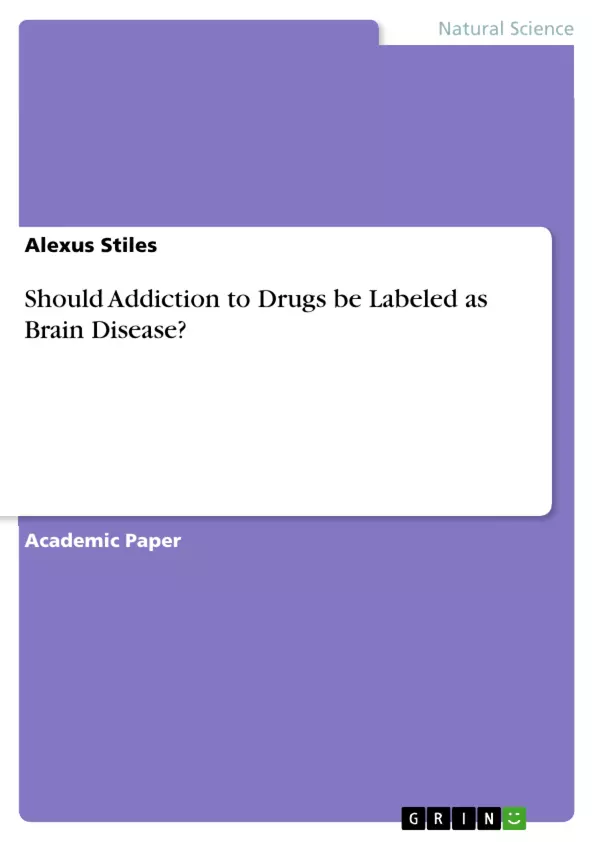There has been debate on whether or not addiction to drugs should be considered a brain disease. The idea of addiction as a disease first came about in 1987, 31 years after alcoholism was labeled a disease by the American Medical Association in 1956 (n.d.c). In Unit 3 of Taking Sides: Clashing Views in Health and Society, Leshner and Slate (2018) both provide opposing arguments on the subject. Leshner is arguing that addiction is a brain disease while Slater argues that it is not a brain disease.
Inhaltsverzeichnis (Table of Contents)
- Introduction
- What is a Disease?
- Addiction
- Argument-Support
- Koskela et al. – “Update of neurotrophic factors in neurobiology of addiction and future directions”
- Levran et al. – “Susceptibility loci for heroin and cocaine addiction in the serotonergic and adrenergic pathways in populations of different ancestry”
- Diana, M. “The Addicted Brain”
- Argument-Oppose
Zielsetzung und Themenschwerpunkte (Objectives and Key Themes)
The article explores the debate surrounding the classification of addiction to drugs as a brain disease, focusing on the arguments for and against this perspective. It examines the scientific evidence regarding the biological mechanisms associated with addiction, particularly the role of neurotransmitters and brain structures. The article also delves into the potential implications of labeling addiction as a disease, considering its impact on treatment approaches and societal perceptions.
- The biological basis of addiction and its relationship to brain function
- The role of neurotransmitters, such as dopamine, glutamate, and GABA, in addiction
- The impact of genetics and environmental factors on susceptibility to addiction
- The implications of classifying addiction as a disease for treatment and societal understanding
- The ethical considerations surrounding the labeling of addiction as a disease
Zusammenfassung der Kapitel (Chapter Summaries)
The introduction sets the context for the debate surrounding the classification of addiction as a brain disease, outlining the opposing perspectives of Leshner and Slate. It defines the terms "disease" and "disorder" and explores the prevalence of drug abuse globally. The chapter on "What is a Disease?" provides a definition of disease, addressing the potential distinction between disease and disorder. The chapter on "Addiction" presents statistics on drug use and abuse worldwide, highlighting the impact of drug abuse on public health.
The "Argument-Support" section presents the arguments in favor of classifying addiction as a brain disease. It analyzes the work of Leshner, Koskela et al., and Levran et al., who all support this viewpoint. Their arguments center on the compulsive nature of addiction, the role of neurotrophic factors and neurotransmitters in addiction, and the genetic predisposition for addiction.
The "Argument-Oppose" section presents the opposing viewpoint, arguing against the classification of addiction as a brain disease. The author, Steven Slate, posits that addiction is a complex phenomenon influenced by a variety of factors and cannot be simply categorized as a brain disease.
Schlüsselwörter (Keywords)
The main keywords and focus topics of the text include: addiction, brain disease, neurotransmitters, dopamine, glutamate, GABA, neurotrophic factors, BDNF, GDNF, genetics, environment, treatment, societal perceptions, ethics, compulsive behavior, withdrawal symptoms, homeostasis, drug abuse, drug use, public health.
- Quote paper
- Alexus Stiles (Author), 2019, Should Addiction to Drugs be Labeled as Brain Disease?, Munich, GRIN Verlag, https://www.grin.com/document/470551



